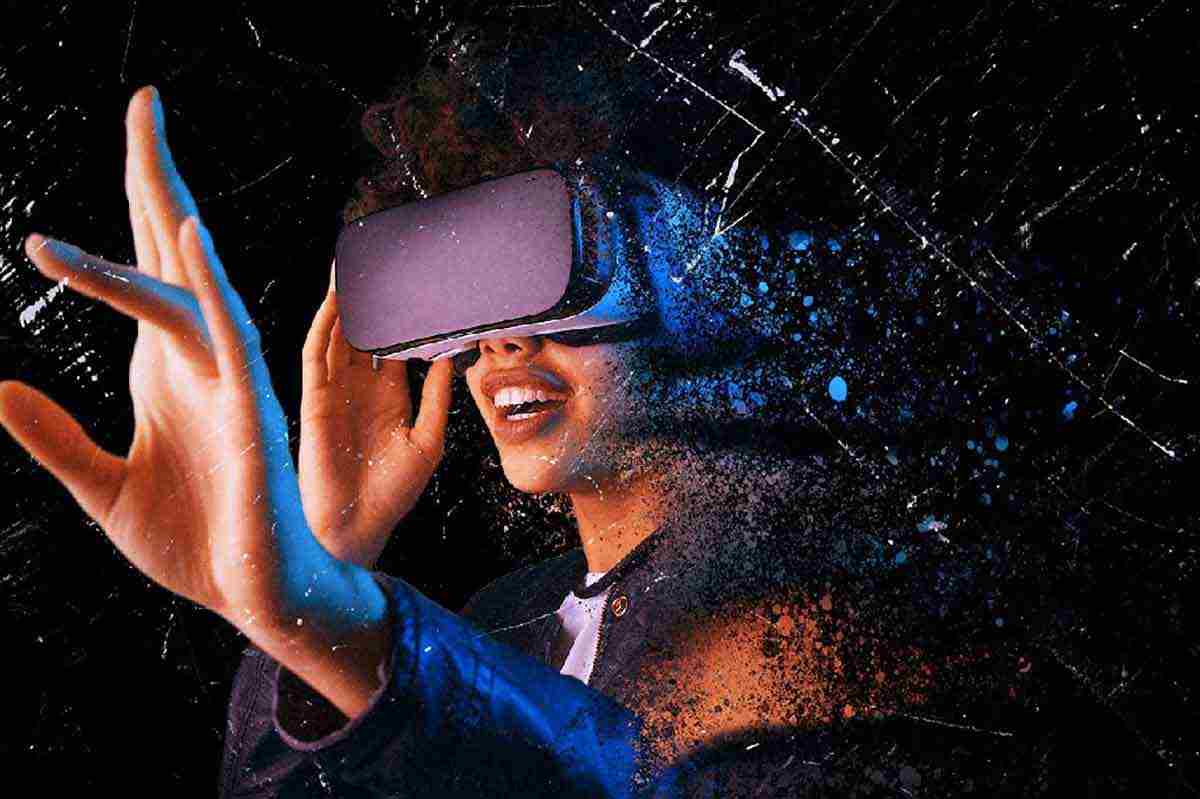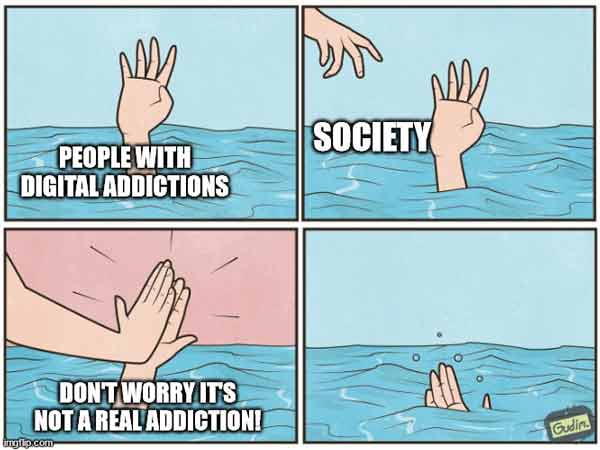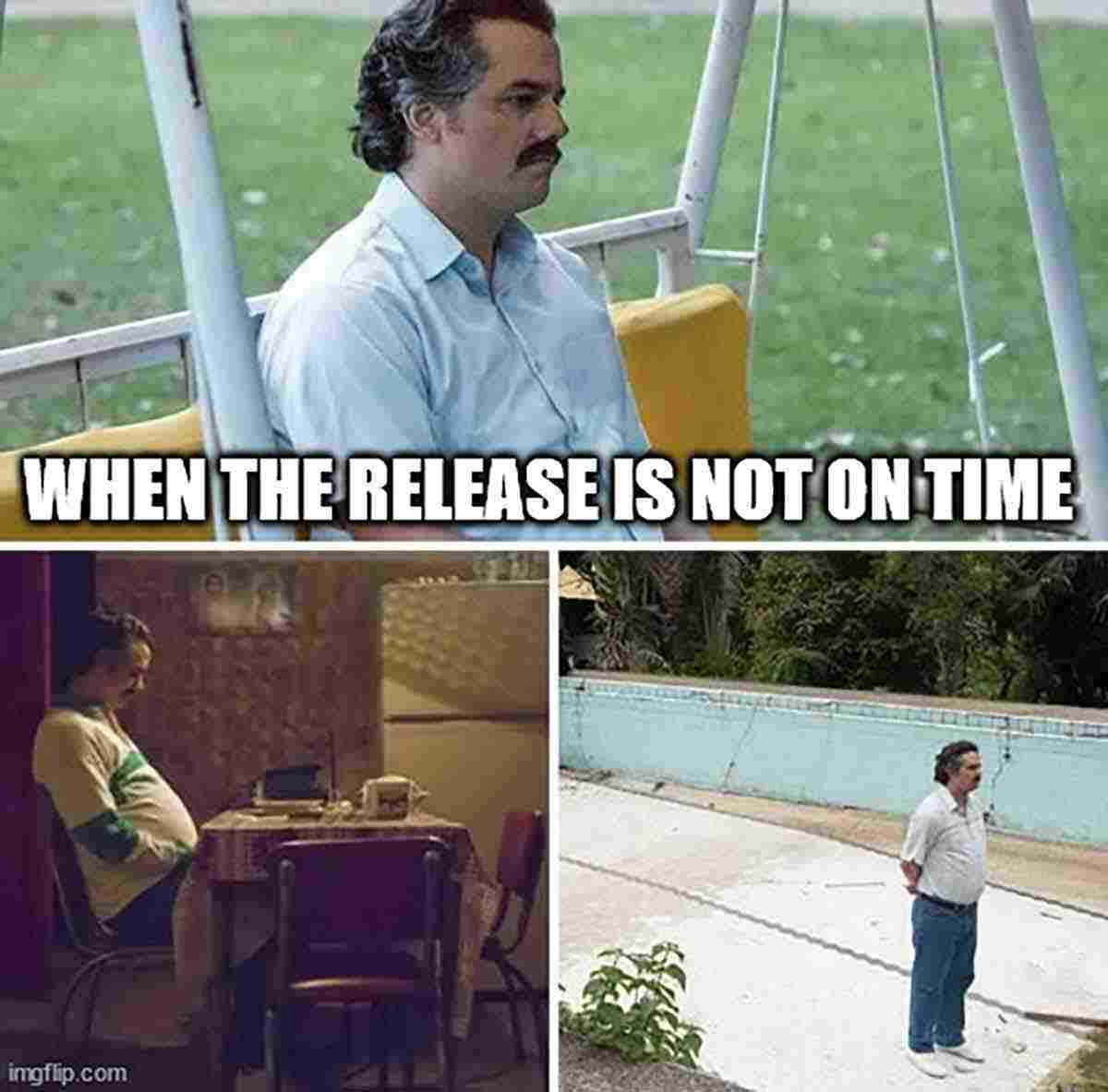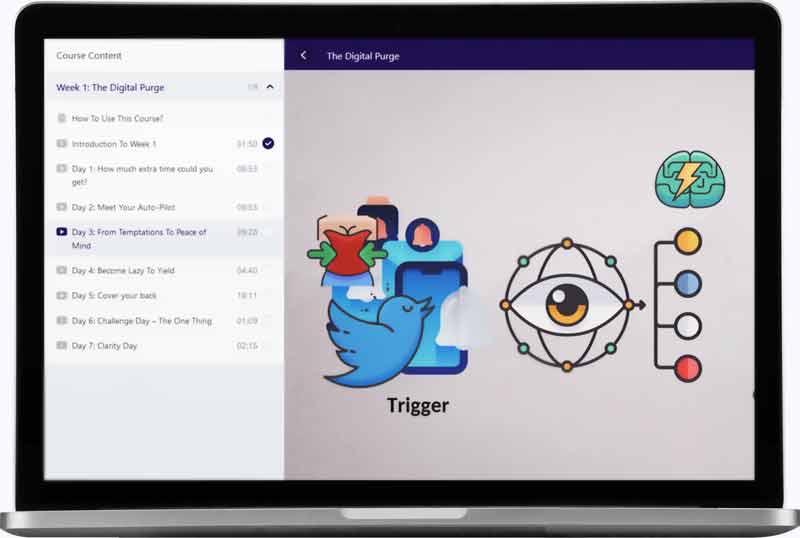Welcome to our digital detoxing series! A series on how to stop addictions toFortnite,Facebook,Instagram,porn,Netflix, Youtube,Tinder… Findall the posts about digital addiction. Today, let’s talk about how to quit the virtual reality addiction.

- What’s the virtual reality addiction?
- Addiction to virtual reality, a “real” addiction?
- What’s considered virtual reality addiction
- How much virtual reality is too much?
- Some technology addiction facts & statistics
- Symptoms & Causes of the virtual reality addiction
- Why is virtual reality so addictive?
- Possible causes of virtual reality dependency
- Symptoms, Causes and Signs of virtual reality addiction
- Problems, impacts & bad effects of virtual reality
- Some benefits of virtual reality
- health problems
- impact on brain & mental health
- impact on relationships
- How to stop & quit your virtual reality addiction
- Main steps and solutions to break the virtual reality addiction
- Best virtual reality blocker apps & functionalities
- where to seek extra help?
- Conclusion
- To Go Further
- How to help someone with virtual reality addiction
- Best books about technology addiction
- Research about technology addiction
What is the virtual reality addiction?
About virtual reality
Virtual reality is a computer-generated simulation of a 3D environment that can be interacted with in a seemingly real or physical way by a person using special equipment.
Addiction to virtual reality, a “real” addiction?
Officially an addiction?
First, let’s have a look to the DSM-5,the Diagnostic and Statistical Manual of Mental Disorders. Does it includes virtual reality addiction?
No, virtual reality addiction is not listed in the DSM-5, the official manual of mental disorders used by mental health professionals.
So what means “virtual reality addiction”?
Virtual reality addiction is an excessive or compulsive use of virtual reality technology, such as video games, that impacts a person’s ability to function in daily life. People who suffer from this type of addiction may become socially isolated and can develop physical symptoms such as headaches, nausea, and eyestrain.
What is considered virtual reality addiction?
- 1. Increased frequency of using virtual reality technology: People who are addicted to virtual reality might spend more and more time using technology, often neglecting other important activities such as work, school, and socializing.
- 2. Withdrawal symptoms: People who are addicted to virtual reality might experience withdrawal symptoms such as anxiety, irritability, and restlessness when not using the technology.
- 3. Lying about the amount of time spent in virtual reality: People who are addicted to virtual reality might lie about the amount of time they spend in virtual reality in order to hide their addiction.
- 4. Loss of interest in other activities: People who are addicted to virtual reality might gradually lose interest in other activities and only be interested in virtual reality.
- 5. Neglect of relationships: People who are addicted to virtual reality might neglect important relationships in their life in order to spend more time in virtual reality.
How much virtual reality is too much?
It is difficult to answer this question definitively as it will depend on individual circumstances and preferences. Generally speaking, spending too much time in virtual reality can lead to social isolation and feelings of depression, so it is important to strike a balance with other activities and maintain healthy relationships with friends and family.
Some technology addiction facts & statistics

Technology addiction is a growing concern in today’s world. Here are some statistics related to technology addiction:
- 1. According to a 2019 survey by Common Sense Media, 50% of teens feel addicted to their mobile devices.
- 2. A study conducted by the Pew Research Center found that 28% of adults in the US feel they are constantly online.
- 3. A survey conducted by the American Psychological Association found that 43% of Americans are constantly checking their electronic devices for email, texts, or social media updates.
- 4. A survey conducted by the Royal Society of Public Health in the UK found that social media is the most addictive technology, with 63% of respondents reporting that they check their social media accounts at least once a day.
- 5. In a study conducted by the University of Maryland, students were asked to give up all technology for 24 hours. Many of the participants experienced withdrawal symptoms such as anxiety, irritability, and even physical symptoms such as headaches.
- 6. A study conducted by the University of Gothenburg in Sweden found that excessive use of mobile phones can lead to sleep disorders, depression, and anxiety.
- 7. According to the World Health Organization, internet addiction disorder (IAD) is a real condition that can have serious negative consequences on an individual’s mental and physical health.
Is the virtual reality addiction widespread?
There is not yet enough data to determine the exact number of people addicted to virtual reality, as the technology is still relatively new and not widely accessible to the general public. However, there are concerns about the potential for addiction to immersive virtual reality experiences, particularly in individuals who are already prone to addictive behaviors. More research is needed to fully understand the risks and benefits of virtual reality as a form of entertainment and therapy.
Symptoms, Causes and Signs of virtual reality addiction
Why is virtual reality so addictive?
Virtual reality is so addictive because it provides a completely immersive experience. It allows users to interact with virtual worlds in a way that is not possible in the real world, offering a level of engagement and escapism that is difficult to find elsewhere. In addition, many virtual reality games and experiences provide a sense of achievement, progress and reward that people find satisfying and rewarding.
Possible causes of virtual reality dependency
- 1. Immersive Nature of Virtual Worlds: Virtual reality provides people with a chance to escape reality and immerse themselves in a digitally created world. This can be incredibly appealing, especially to those who find it difficult to cope with their day-to-day lives.
- 2. Social Interaction: People can enjoy social interaction with others in virtual reality, and this can be a major factor in driving people to become addicted to virtual reality.
- 3. Rewards and Achievements: Games and other virtual experiences can offer rewards and achievements, which can be incredibly appealing to players. These rewards and achievements can become addictive and lead to overuse of virtual reality.
- 4. Lack of Regulation: Virtual reality is still relatively new, and there is no regulation in place to control its use. This can lead to people overusing virtual reality without any limits or guidance.
- 5. Accessibility: Virtual reality is highly accessible, with headsets and other equipment becoming increasingly affordable. This makes it easier for people to access and become addicted to virtual reality.
Signs & Symptoms of virtual reality addiction
Now let’s see if you have the virtual reality addiction problem.
- 1. You spend more time in virtual reality than in the real world.
- 2. You have a hard time focusing on real world tasks.
- 3. You feel like you’re missing out on something if you’re not in your virtual world.
- 4. You forget to eat or sleep when you’re in your virtual world.
- 5. You avoid interacting with people in the real world.
- 6. You find yourself constantly thinking about virtual reality.
- 7. You find yourself drawn to virtual reality even after you’ve taken a break from it.
Problems, impacts & bad effects of virtual reality: should you quit?

What are some benefits of virtual reality
Pros of Virtual Reality:
- 1. Immersive Experiences: Virtual reality offers a fully immersive experience that can take people to places they could never go in the physical world. From outer space to the depths of the ocean, virtual reality can transport people to any destination they can imagine.
- 2. Cost Savings: Virtual reality can be a great way to save money on travel, equipment, and other costs associated with physical experiences.
- 3. Variety of Uses: Virtual reality can be used for a variety of purposes, from entertainment to education, from gaming to research.
- 4. Improved Safety: Virtual reality can be used to simulate dangerous situations, allowing people to practice and hone their skills without risking physical harm.
- 5. Increased Engagement: Virtual reality can engage users more than traditional media, allowing them to interact with their environment in real-time.
- 6. Research Applications: Virtual reality can be used to help researchers study and investigate a wide range of topics, from the effects of drugs to the effects of climate change.
- 7. Accessibility: Virtual reality can be a great way to make experiences and content more accessible to people with physical or cognitive disabilities.
- 8. Job Training: Virtual reality can be used to train people for a wide range of jobs, from medical procedures to hazardous work.
- 9. Stress Relief: Virtual reality can be used as an escape from reality and a way to reduce stress and anxiety.
- 10. Improved Patient Care: Virtual reality can be used to improve the quality of care provided to patients, from post-surgical care to physical therapy.
But at the opposite, what can be some virtual reality addiction problems addicts suffer from?
general health problems
- 1. Motion Sickness: One of the most common side effects of virtual reality is motion sickness. This can happen when the user moves too quickly within the virtual environment, making them feel dizzy or nauseous.
- 2. Headaches and Eye Strain: Prolonged use of virtual reality can cause headaches and eye strain due to the strain put on the eyes.
- 3. Changes in Balance: Virtual reality has been known to cause changes in balance and coordination. This is due to the fact that the user is moving in a virtual environment and their body is not used to it.
- 4. Anxiety or Fear: Some users may become overwhelmed or anxious while using virtual reality, due to the feeling of “immersion” in the virtual environment.
- 5. Isolation: Virtual reality can also lead to social isolation, as users become more accustomed to the virtual world and less interested in the real world.
virtual reality and sleep disorder
There is some evidence that suggests that virtual reality can cause sleep problems or disorders in some individuals. One study found that exposure to virtual reality environments led to a decrease in melatonin production, which can disrupt sleep patterns.
Additionally, some individuals may experience motion sickness or eye strain from using virtual reality, which can also interfere with their ability to sleep.
However, it is important to note that the impact of virtual reality on sleep is still being studied, and more research is needed to fully understand the relationship between the two.
Additionally, not everyone who uses virtual reality will experience sleep problems or disorders, and the effects may vary depending on the individual and the type of virtual reality experience.
virtual reality affecting your brain & mental health: bad for brain and mental health?
Some effects of virtual reality on your brain
- 1. Loss of Cognitive Abilities: Virtual reality can cause a person to lose cognitive abilities such as memory, concentration, and problem-solving.
- 2. Disorientation: Virtual reality can cause a person to become disoriented, as their sense of reality is blurred by the virtual environment.
- 3. Distorted Perception: Prolonged use of virtual reality can lead to distorted perception, as the user begins to view the real world through the virtual lens.
- 4. Stress and Anxiety: Virtual reality can cause stress and anxiety, as the user is immersed into a world they cannot control.
- 5. Motion Sickness: Virtual reality may also cause motion sickness or nausea, as the user’s body is unable to adjust to the rapid movements of the virtual environment.
Some effects of virtual reality on your mental health
- 1. Social Isolation: Virtual reality can lead to social isolation if it is used excessively. People who spend too much time in virtual environments may become disconnected from their social networks and lead to loneliness.
- 2. Compulsive Use: Virtual reality can lead to compulsive use, which can have serious consequences. People who become addicted to virtual reality may neglect their real-life responsibilities, such as work and family.
- 3. Psychological Problems: Excessive use of virtual reality can cause psychological problems, such as anxiety, depression, and even PTSD. It can also lead to feelings of disorientation, confusion, and fear.
- 4. Loss of Touch: Virtual reality can also lead to a loss of touch with the real world. People who spend too much time in virtual environments may lose their ability to interact with real people and to recognize real-world cues.
- 5. Physical Health Problems: Prolonged use of virtual reality can cause physical health problems, such as eye strain, headaches, and nausea. It can also lead to neck and back pain.
Does virtual reality cause stress and anxiety?
Yes, virtual reality can cause stress or anxiety in some people. This can happen due to factors such as motion sickness, disorientation, sensory overload, or a feeling of being trapped in the virtual environment.
Additionally, virtual reality experiences that involve frightening or disturbing content can also trigger feelings of anxiety or stress. It is important for individuals to be aware of their own limits and to take breaks as needed to avoid feeling overwhelmed.
Can virtual reality addiction lead to sadness and depression?

Yes, excessive use of virtual reality can lead to sadness and depression. Virtual reality addiction can cause individuals to become isolated from the real world, leading to feelings of loneliness and social withdrawal.
Additionally, virtual reality experiences can create an intense emotional connection, and when the user returns to reality, they may experience a sense of loss or disappointment, leading to feelings of sadness or depression. It’s important to use virtual reality in moderation and balance it with real-world experiences to maintain a healthy emotional state.
Dopamine and virtual reality
Dopamine is a neurotransmitter that is involved in the brain’s reward and pleasure systems. It is released when we experience something pleasurable, such as eating a delicious meal or receiving a compliment. Virtual reality (VR) can also trigger the release of dopamine in the brain.
When we use VR, we are immersed in a simulated environment that can be exciting and engaging. This can lead to increased levels of dopamine in the brain, which can enhance our enjoyment and engagement with the VR experience.
Studies have shown that the use of VR can increase dopamine release in the brain, particularly in areas associated with reward and motivation. This can have a positive effect on our mood and motivation, and may also enhance learning and memory.
However, it is important to note that excessive use of VR or other forms of technology can also lead to addiction and negative consequences. As with any activity, moderation is key to ensuring a healthy balance in our lives.
virtual reality effects on Focus, productivity, attention span, academic performance…
Virtual reality can have both positive and negative effects on focus, productivity, attention span, and academic performance depending on how it is used and the individual using it. Here are some potential effects:
- 1. Focus: Virtual reality can help increase focus by providing an immersive and engaging environment that can promote concentration and attention. However, it can also be distracting if not used appropriately.
- 2. Productivity: Virtual reality can enhance productivity by providing a more efficient and effective way to simulate real-life situations and scenarios. It can also help to reduce the time and costs associated with traditional training methods. However, it can also be time-consuming and require significant resources to set up and maintain.
- 3. Attention span: Virtual reality can help to improve attention span by providing an interactive and engaging experience that requires active participation. However, it can also be over-stimulating and lead to a shorter attention span if used excessively or inappropriately.
- 4. Academic performance: Virtual reality can enhance academic performance by providing a more engaging and interactive learning experience that can help to improve retention and understanding of complex concepts. However, it can also be costly and require significant resources to implement in educational settings.
Overall, the impact of virtual reality on focus, productivity, attention span, and academic performance will depend on how it is used, the individual using it, and the specific context in which it is used.
A word about ADHD and virtual reality
There is limited research on the specific interaction between ADHD and virtual reality, but some studies suggest that virtual reality may be a useful tool for individuals with ADHD.
One study found that children with ADHD who used a virtual reality environment to learn and practice social skills showed significant improvement in their ability to maintain eye contact, take turns in conversation, and initiate conversation compared to those who received traditional social skills training.
Another study found that adolescents with ADHD who played a virtual reality game designed to improve attention and focus showed improvements in their cognitive performance.
However, it is important to note that virtual reality should not be seen as a replacement for other forms of treatment for ADHD, such as medication and therapy. It may be used as an additional tool to support treatment and improve outcomes.
affecting your relationships
virtual reality and self-esteem
Virtual reality can have both positive and negative effects on self-esteem. On one hand, it can be a powerful tool for boosting self-esteem by providing users with a sense of accomplishment and mastery. For example, virtual reality games or simulations that allow users to overcome challenges or achieve goals can help build confidence and improve self-esteem.
On the other hand, virtual reality can also have negative effects on self-esteem if it creates unrealistic expectations or promotes negative self-comparisons. For example, if virtual reality experiences focus on idealized body types or lifestyles, this can lead to feelings of inadequacy or low self-worth for those who don’t fit these norms.
Overall, the impact of virtual reality on self-esteem will depend on how it is designed and used. If virtual reality experiences focus on building skills and providing positive feedback, they can be a valuable tool for improving self-esteem. However, if they promote unrealistic expectations or negative self-comparisons, they can have a harmful impact on self-esteem.
virtual reality addiction leads to isolation and loneliness?
.jpg)
Yes, excessive use of virtual reality can lead to isolation and loneliness. People who spend a lot of time in virtual reality may become disconnected from the real world and may struggle to form meaningful relationships with others. This can lead to feelings of loneliness and isolation, which can have negative effects on mental health and well-being. It’s important for individuals who use virtual reality to maintain a balance between their virtual and real-life activities and to make sure that they are still engaging with the world around them.
Effects of virtual reality on your relationship
Positive effects of virtual reality on your relationship:
- 1. Increased intimacy: Virtual reality can create a sense of shared experiences and increase feelings of intimacy between partners. It can also help create a deeper emotional connection.
- 2. Enhanced Communication: Virtual reality can improve communication skills between partners as it allows them to practice and improve their ability to communicate in a safe, controlled environment.
- 3. Shared experiences: Virtual reality can create opportunities for couples to experience activities that they may not be able to do in real life, such as travel or extreme sports, which can bring them closer together.
- 4. Increased empathy: Virtual reality can help partners empathize with each other’s point of view, as they can experience situations from different perspectives.
Negative effects of virtual reality on your relationship:
- 1. Isolation: Spending too much time in virtual reality can lead to social isolation and prevent couples from spending quality time together in the real world.
- 2. Addiction: Virtual reality can be addictive and lead to obsession, which can negatively impact the relationship and lead to neglecting other important aspects of life.
- 3. Disconnection: Virtual reality can create a disconnect between partners, as they may become too immersed in the virtual world and lose touch with the real world and each other.
- 4. Unrealistic expectations: Virtual reality can create unrealistic expectations of what a relationship should be like and put pressure on partners to live up to these expectations, leading to disappointment and dissatisfaction.
How To Stop & quit Your virtual reality Addiction
Finally you think you are addicted to virtual reality and you are wondering how to quit it? How to break and overcome your cravings for virtual reality?
Here are the best solutions, steps, supports, resources and help you can get to treat your virtual reality addiction.
Main steps and solutions to break the virtual reality addiction
- 1. Acknowledge that you have a problem: Before you can begin to tackle your virtual reality addiction, it is important to first acknowledge that you have a problem.
- 2. Identify your triggers: Take some time to think about what might be causing you to use virtual reality excessively. It could be boredom, loneliness, stress, or something else.
- 3. Set boundaries: Make a plan for yourself of how often you will use virtual reality and for how long. Give yourself a time limit each day and stick to it.
- 4. Find other activities: Start finding other activities to fill your time. It could be physical activities, social activities, or creative activities.
- 5. Seek professional help: If you find yourself unable to control your virtual reality use, it may be time to seek professional help. A counselor or psychologist can help you work through your addiction and provide support.
Actually, that’s what most documentation out there is about… However, quitting a digital addiction can be a bit trickier than that.
So our team, after testing many ways, designed a bulletproof way to overcome them. Here are some clear and practical steps that are very powerful to quit a digital addiction, including virtual reality:
1. Purge temptations: Get rid of virtual reality
First, cleaning your life from temptations is much easier than resisting to them. Disable or delete your virtual reality accounts, change the password and hide it somewhere you can’t access easily, keep your phone / computer far away… Out of sight out of mind.
Here is a video from our course the The Digital Purge. on how to add resistance to your temptations, so you become so lazy to engage with them that you give them up:


